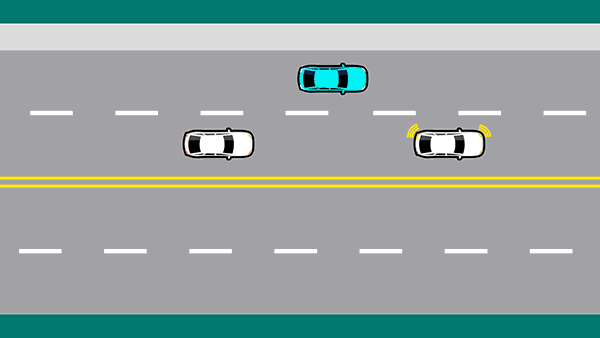Merging is where two traffic streams going in the same direction become one. There are two types of merge:
- where two lanes merge to one lane
- or when one lane ends and you need to merge into the lane that continues.
Where should you practise this?
- Where the road narrows and two lanes become one. Practise at a time when there’s at least some traffic flowing on the road.
- Where one lane ends and you need to merge into the lane that continues, like a feeder lane on a motorway. Choose a time when the traffic isn’t really heavy – so avoid rush hour.
Where two lanes merge into one
- Use the mirror-indicate-shoulder check routine before merging.
- Remember to merge like a zip! This means a vehicle in the left lane goes, then a vehicle in the right lane goes, and so on (coming together just like a zip).
- Travel at the same speed as the cars around you before you merge.
- While it’s not a legal requirement to indicate in this situation, it’s a good idea to do so as it helps other drivers around you know what you’re going to do.
When your lane comes to an end
- If the lane you’re in comes to an end, indicate right to show that you’re merging with the lane next to you.
- Plan to use the whole length left of the lane you’re in to get up to the speed of the surrounding traffic before you merge.
- Use the mirror-indicate-shoulder check routine before merging.
- Identify the gap you’ll move into and adjust your speed. Do this long before you merge, it means you’ll be in the right position when your lane comes to an end.
More tips for merging
- Look well ahead (remember the 12-second rule) for any road signs that tell you there is a lane merge ahead.
- If traffic is slowing down in front of you it could be a clue that there is a merge ahead.
- As you come up to the merge take a really good look around. Check your mirrors, indicate, and turn your head to check your blind spot.
- If there’s someone in the other lane, decide whether your car should move in front of them or tuck in behind them.
- Turn off your indicator once you’ve merged so traffic around you doesn’t get confused.
Are you test ready?
Question

Next skill
